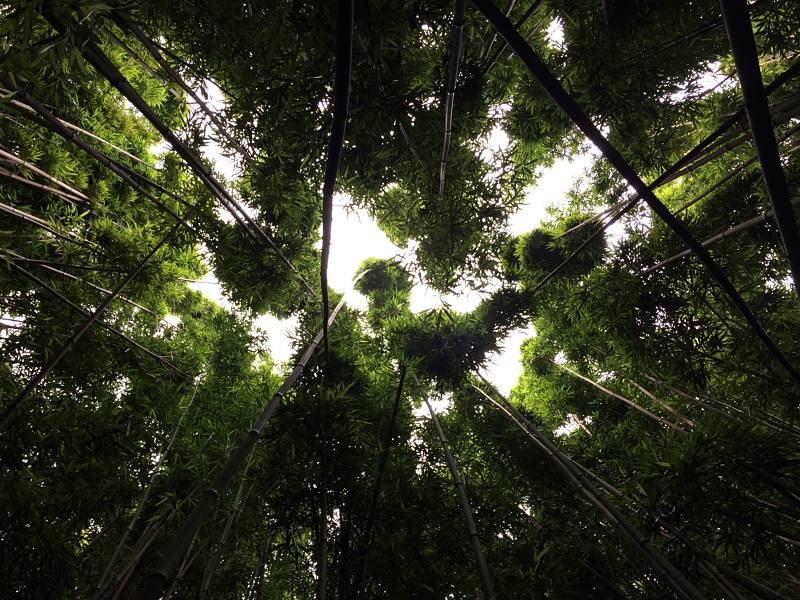10 Reasons We're Thankful to Live on Maui
This list could've run on for pages and pages. But on this extended holiday weekend, we'll settle for our top 10 reasons to be thankful for living on ...

As a Maui ocean tour company, it's not every day that we blog about an animal that's not aquatic. Then again, it's not every day that an animal's lost Hawaiian name is found, but that's exactly what happened to the Hawai'i Creeper (Loxops mana). This rare forest bird that lives in the koa forest of the Puʻu Makaʻala Natural Area Reserve had no known Hawaiian name for about a century, until a tenacious researcher rediscovered it.
The name the researcher found was ʻAlawī. The researcher, was Noah Gomes, a Hawaiʻi Volcanoes National Park cultural practitioner and recent graduate of the University of Hawaii at Hilo. Having earned a masters degree in Hawaiian language and literature, Gomes was armed with the foundation he needed to explore some of the earliest documented Hawaiian literature to find reference to this beautiful and rare forest bird.
Determined to find an answer, Gomes spent his time sifting through various historical documents, including old Hawaiian newspaper articles. When he had gathered enough clues pointing to the name ʻAlawī, he published a thesis on it, and the name was approved by the Hawaiian Lexicon Committee on February 25, 2017. Following that, a story of his research appeared in the Elepaio journal in the May-June 2017 issue.
To celebrate and spread awareness about the discovery in true Hawaiian fashion, a naming ceremony was recently held by Gomes and two of his associates. In response to the discovery, the following is a quote from Emma Yuen, the Native Ecosystems Program Manager with the DLNR Division of Forestry and Wildlife.
“Rediscovering the traditional name of the ‘Alawī strengthens the close relationship of Hawaiian culture with our native plants and animals. This celebration fills us with pride and a sense of kuleana to protect native forests – the home of these unique creatures, and the source of inspiration, beauty, and cultural identity.”
So, what stands out about this diminutive little forest bird? Being similar in appearance to the Amakihi, the small yellow and green ‘Alawī had often been confused with its relative. What set it apart enough to make it recognizable as a different species was its behavior, which included a preference for preying on insects in koa forests. But what's especially charming about the ‘Alawī is the fact that it's so curious, it often approaches humans in the forest. Bird watchers and ‘Alawī seem to find each other equally interesting, although the duration of that interest is generally shorter for the bird. After all, survival puts pressure on a bird's schedule.
‘Alawī is one of the four endangered forest birds found exclusively on the Big Island of Hawaii. Like many other native Hawaiian birds, its once broad territory is now restricted to higher elevation rainforests that are too cold for mosquitos, which carry avian malaria. The ‘Alawī can be found in the 18,730-acre Pu‘u Maka‘ala NAR.
While no one can say with absolute certainty that ʻAlawī is Loxops mana, the supporting evidence is unusually substantial. There are very few other birds that match the same description of ʻAlawī. In any case, both scientists and Hawaiian cultural practitioners have embraced Gomes' compelling research and the name ʻAlawī for Loxops mana.
Seeing as we specialize in Maui ocean tours and know that there are some native Hawaiian aquatic species with unknown Hawaiian names, it's easy to wonder if Gomes will turn his gaze on the ocean and make some more discoveries. More than one success of this magnitude is a lot to ask for, but we can always hope! Mahalo!
This list could've run on for pages and pages. But on this extended holiday weekend, we'll settle for our top 10 reasons to be thankful for living on ...
1.) At just over 140 square miles, Lana'i is the sixth largest island of the Hawaiian island chain. During the 2010 census, Lana'i's counted just 3,10...
Unlike the Caribbean, there hasn't been a long history of pirate activity in Hawaii. But there is one incident, one that many believe was the last lar...
